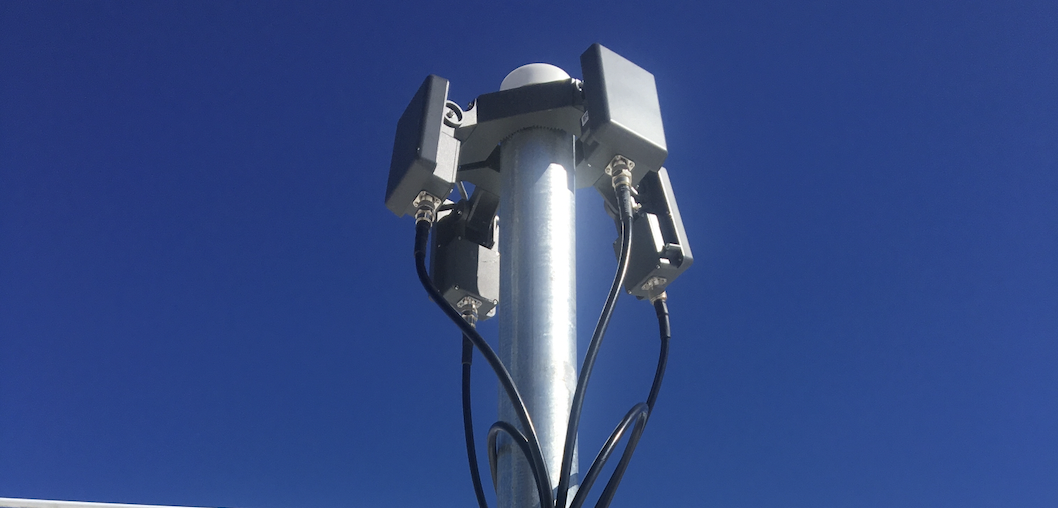As the drone industry evolves at a rapid pace, the global regulatory landscape is struggling to keep up. For organizations focused on security and public safety, this patchwork of rules creates a complex operational challenge.
A drone operating legally in London may be subject to entirely different restrictions in Los Angeles. This disparity isn't just a concern for aviators; it's a critical issue for security leaders who must protect their airspace.
Nowhere is this divergence clearer than in the regulatory frameworks adopted by the European Union/United Kingdom and the United States. As we move further into this decade, these two governing bodies have established distinct philosophies for managing unmanned aircraft systems (UAS). The EU/UK model, governed by EASA, is primarily risk-based, creating flexible pathways for different types of operations. The US model, governed by the FAA, is more standardized and conservative, focusing on pilot certification under a single primary rule.
1. The EU/UK Model: A Risk-Based, Flexible Approach
The European Union Aviation Safety Agency (EASA) has implemented a framework built on a "risk-based" philosophy. The United Kingdom's Civil Aviation Authority (CAA) has adopted a very similar system.
This model classifies drone operations into three main categories based on the level of risk:
- Open Category: For low-risk operations. This category generally does not require prior authorization, though it does require pilots to pass online theoretical exams.
- Specific Category: For moderate-risk operations. This requires the operator to conduct a SORA (Specific Operations Risk Assessment) and gain approval from their national aviation authority.
- Certified Category: For high-risk operations, such as large cargo drones, which are treated similarly to manned aircraft.
This approach allows for more flexibility in special operations. For example, BVLOS (Beyond Visual Line of Sight), night operations, and flights over people are all possible under the EASA framework, provided the operator gains authorization.
The takeaway: This system is granular and "innovation-friendly". It provides clear pathways for advanced operations by assessing the risk of the specific flight rather than imposing a single set of rules.
2. The US Model: A Standardized, Operator-First Approach
The Federal Aviation Administration (FAA), a single national authority, has taken a different approach. The FAA's philosophy is that the safety of an operation is primarily defined by the pilot's knowledge and certification.
The foundation of US commercial drone law is FAA Part 107. This is a single certificate that a pilot must obtain by passing an aeronautical knowledge test. This Remote Pilot Certificate allows a pilot to operate any drone under 55 lbs (approx. 25 kg) for commercial purposes.
In this model, a 1-pound drone and a 50-pound drone are governed by the same pilot certification. However, Part 107 comes with strict standard restrictions:
- Operations must be within the pilot's visual line of sight (VLOS).
- Night flights and flights over people are generally not allowed without special permission.
To perform more advanced operations (like BVLOS or night flights), an operator must apply for and receive a specific waiver from the FAA. This "waiver-dependent" system is a key part of the FAA's "safety-first, conservative" approach.
The takeaway: The US system prioritizes pilot accountability and a standardized, predictable environment. Advanced operations are possible, but they are treated as exceptions to the rule, requiring individual approval.
3. At-a-Glance: Comparing Regulatory Philosophies
|
Feature |
EU / UK (EASA & CAA) |
United States (FAA) |
|
Primary Philosophy |
Risk-Based & Flexible |
Safety-First & Conservative |
|
Key Framework |
Three-Category System (Open, Specific, Certified) based on risk |
Part 107 (a single rule for <55lb drones) |
|
Pilot Requirement |
Online exams for Open Category; no single "license" required |
Remote Pilot Certificate (requires passing a knowledge test) |
|
Special Operations (BVLOS, Night, etc.) |
Allowed with authorization (e.g., via SORA in Specific Category) |
Requires a special waiver from the FAA |
|
Approach |
Proactive & Granular |
Operator-Centric & Waiver-Dependent |
What This Means for Global Security Operations
The simplicity of the FAA's Part 107 was instrumental in launching the US commercial drone industry. However, from a long-term risk management perspective, it treats a wide variety of aircraft with the same broad strokes.
The EU/UK's risk-based system, while more complex, is arguably built for a future where autonomous drones for deliveries and specialized services will be common. It creates a clear, granular path for manufacturers and operators to build for specific, pre-approved risk profiles.
The Security Challenge: Why Regulations Are Not Enough
For a security director, this fragmented legal landscape creates a significant challenge.
Your security team cannot be expected to be experts on EASA, CAA, and FAA regulations simultaneously. You cannot rely on a pilot's intent to be compliant to ensure your facility's safety. A security plan cannot be based solely on a pilot's registration or certification.
Regulations are designed for the compliant. A security plan must account for everyone else.
Drone laws are about managing known, registered operators. A true drone security solution must be capable of detecting all drones and all pilots—regardless of their risk category, their registration status, or whether they have a waiver.
That is the core of airspace security. It's about navigating this global complexity with a solution that provides a complete, reliable picture of your airspace, allowing you to identify any aerial activity and respond appropriately.
Ready to see a clear, comprehensive picture of your airspace? Schedule a demo of the Airsight platform today.

.jpg)









